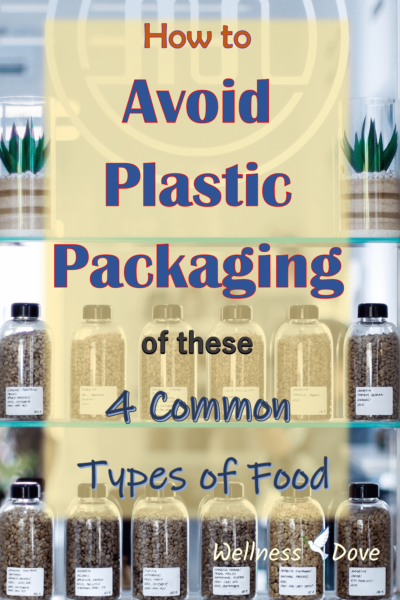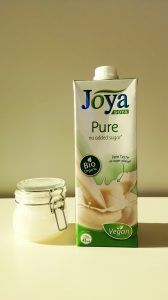
Plastic packaging is a necessity when it comes to preserving and protecting our food during its long journey from the manufacturer to our plates.
At the same time, plastic is known to leach toxins into the food that comes into close contact with it, especially when the plastic is heated or scratched.
Even more, usually the time our food spends in its packaging throughout the distribution chain is a lot longer than the time it spends in our homes.
Therefore, we need to choose those foods that have had the least contact with synthetic packaging.
Check out our 6 Health Considerations to Bear in Mind about Food in Plastic Packaging for more information.
Here follow our considerations about packaging when buying certain types of food.
Post Contents
Buy fruits and vegetables that are sold loose:
The simple logic is that the lesser the contact between the food and the plastic, the better. Therefore, we prefer buying produce that is sold loose.

Here are some extra reasons, though, to choose loose:
- Perishable foods such as fresh fruits and vegetables are consumed relatively quickly after we buy them. In many cases, however, they are harvested green and transported/stored for a considerable amount of time before they reach the market stand.
- So much produce is sold in plastic bags and marketed as fresher and of higher quality. In practice, the contrary might be true as plastic packaging really does help produce to stay fresher for longer periods. Thus, those wrapped cucumbers are probably older, though better looking, than the loose produce sold loose right next to it.
- When produce is stored in plastic bags, in many cases condensation forms on the inner side of the bag. This moisture absorbs toxins which are then probably carried over to the fruits and vegetables inside the bag.
- More often than not, there is no indication of the type of plastic that is used to make the bag. Basically, we do not know if it is not made from a highly toxic plastic.
And do not forget, if we need to carry it in plastic bags, in order for it to get weighed, we remove the plastic bags immediately upon returning home.
Buy yoghurt, cream, etc. in glass jars or at least polypropylene
Plastic tubs are the norm today for selling yoghurt, sour cream etc.
These tubs, however, are not always made from the same type of plastic. Some of these plastics are proven to be highly toxic while others are much less likely to be so.
Avoid tubs which are made from Polystyrene (PS).
There are numerous studies that suggest that polystyrene leaches toxins into the food and should be avoided. While we find many tubs to be made out of PS, there are equally good products in tubs, made from polypropylene (PP). PP is a lot safer and there is almost no evidence of it being toxic.
The best option, however, is to look for such products in a glass jar. While these can be two to three times more expensive, usually the product inside is of higher quality and the packaging is non-toxic.

Buy milk in cardboard boxes
Milk is commonly sold in plastic bottles or cardboard boxes.
The bottles are usually made from PET or PP plastic. While PET is considered OK for one-time use and today PET bottles are BPA free, PP still is a lot better option.
Unfortunately, no milk is sold in PP bottles where we usually shop and therefore we went for buying milk in cardboard boxes.
Cardboard boxes also contain plastic lining on the inside to waterproof the bottle. Most commonly, it is polyethylene (PE) plastic, which is almost as good as PP and therefore we consider it a better option than PET.
Buy canned food in glass jars
Cans are made out of metal. Therefore for a long time, we considered these safe.
Unfortunately, however, the inner lining of so many cans today contains BPA, which is now regarded as a carcinogen.
Some companies, which take this risk seriously, have opted for a more expensive option, which is BPA free. Such cases, though, are quite rare.
You can check if the can has BPA when you open it – the plastic lining on the inside is easily visible.
The best option though is to buy glass jars, wherever it is possible.
What are your considerations when buying food?
Do you think that plastic should be the dominant form of packaging?



